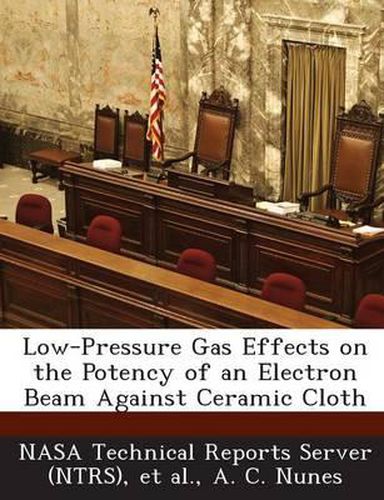Readings Newsletter
Become a Readings Member to make your shopping experience even easier.
Sign in or sign up for free!
You’re not far away from qualifying for FREE standard shipping within Australia
You’ve qualified for FREE standard shipping within Australia
The cart is loading…






An 8-kv electron beam with a current in the neighborhood of 100 mA from the Ukrainian space welding \“Universal Hand Tool\” (UHT) burned holes in Nextel AF-62 ceramic cloth designed to withstand temperatures up to 1,427 C. The burnthrough time was on the order of 8 scc at standoff distances between UHT and cloth ranging from 6-24 in. At both closer (2 in.) and farther (48 in.) standoff distances the potency of the beam against the cloth declined and the burnthrough time went up significantly. Prior to the test it had been expected that the beam would lay down a static charge on the cloth and be deflected without damaging the cloth. The burnthrough is thought to be an effect of partial transmission of beam power by a stream of positive ions generated by the high-voltage electron beam from contaminant gas in the \“vacuum\” chamber. A rough quantitative theoretical computation appears to substantiate this possibility.
$9.00 standard shipping within Australia
FREE standard shipping within Australia for orders over $100.00
Express & International shipping calculated at checkout
An 8-kv electron beam with a current in the neighborhood of 100 mA from the Ukrainian space welding \“Universal Hand Tool\” (UHT) burned holes in Nextel AF-62 ceramic cloth designed to withstand temperatures up to 1,427 C. The burnthrough time was on the order of 8 scc at standoff distances between UHT and cloth ranging from 6-24 in. At both closer (2 in.) and farther (48 in.) standoff distances the potency of the beam against the cloth declined and the burnthrough time went up significantly. Prior to the test it had been expected that the beam would lay down a static charge on the cloth and be deflected without damaging the cloth. The burnthrough is thought to be an effect of partial transmission of beam power by a stream of positive ions generated by the high-voltage electron beam from contaminant gas in the \“vacuum\” chamber. A rough quantitative theoretical computation appears to substantiate this possibility.